Prague: European architecture with a mystic veil
Look at her, Prague! She will steal your heart as, from the enigmatic gate of a viewpoint, you enter into a fantasy painting, where the brush with a flick of a master projected an alchemy of gilded spires, complete, in prefect proportions, with the subtle pastels of its façades. All that gingerbread artisanship is puzzled into the hilltop castle pinched at the back by the spiky St Vitus cathedral, that as a noir Gothic backdrop guards the essence of the esoteric dreams evoking imagery of Prague.


The centuries flowing mystery of its originally independent towns is enforced by the disorienting Gothic darkness, Baroque voluptuousness, Art Nouveau grandeur and other architectonic bafflements that from the ninth century have imprinted their soles into the time-dusted sandy façades of today. Its compact beauty casts her spell on most visitors, but there is more to the town’s charms that energises rather than dims your mood with melancholy.
Under the blue umbrella of a sunny sky brightness pops out from her architecture. Prague is painted with subtle shades, spanning from gingerbread, polished gold, classic mahogany, all the way to the thick milky white. Do not miss out as, often, there is more to see inside, so open yourself to her charms, and allow your feet to take you elsewhere. To capture the entire colour palette, be patient, immerse yourself into her riches and by the time of the day and by the seasonal metamorphoses affected psyche. Like in the charismatic writing of the Prague’s perhaps most famous citizen – Franz Kafka, you may wake up, feel and see everything totally transformed, if you long for it intensely enough. Changing your angle is rewarding not just with more diverse images in your smartphone or camera, but allows for the emerging, highly individual feelings of each particular moment in your captivity by Prague, to embrace you fully into her comforting spell. Once the sun sets behind the lusty horizon, the Prague Castle puzzle, the churches’ roaring domes, the Strahov monastery above the fertile hilly orchards of Petřín and the robust arches of the 14th century Charles Bridge (Karlův most), all gleam with warm golden lights, mesmerising unfailingly the otherwise lighthearted passersby.
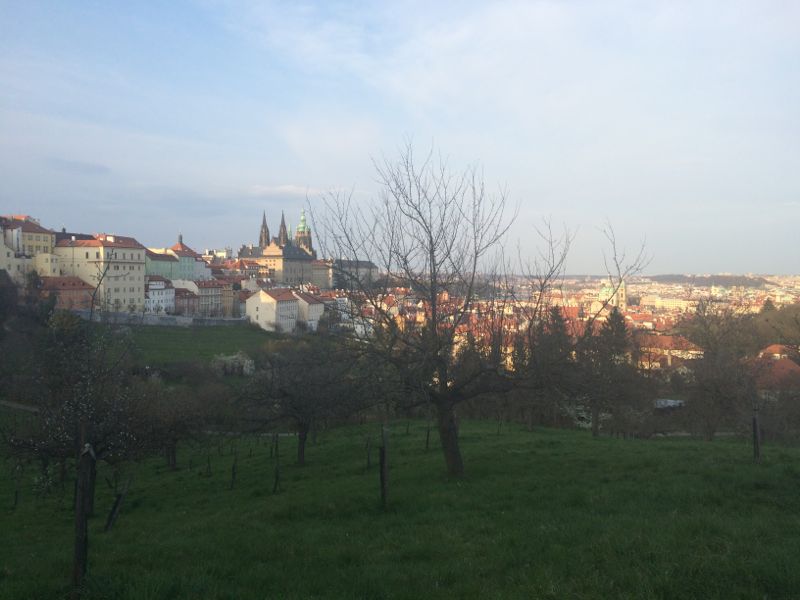

Smooth time in Prague
Now you are set to appreciate the beauty, so I will get more practical. Either before the artists take their stages on the increasingly busy cobbled stone carpet of the Charles Bridge or late after dinner as this popular river crossing empties, are the best times to savour the centuries surviving architecture. Still, beware, the uneven bumps of the stone pavements will massage harshly your soles and uncompromisingly shave high heels, so leave fancy shoes at home as wearing comfortable shoes saves a later pain. Prague is casual, and you will get away with wearing nice walking shoes even at the fanciest restaurants, concerts and shows. The city centre is not too large, although some parts are quite hilly, and the cobbled stones end up feeling like steel after an all-day exploration. As the popular and by many locals cursed wheeled segways will be banned soon, relieve any soreness at the walk-in Thai massage hangouts scattered throughout the city centre.
Avoiding the umbrella gatherings, as I call the tourist groups lead by a guide, will make your trip much more real. There are 30 dark saints-depicting bronze statues lining both sides of the bridge, all are replicas with just one made of marble, and the guides tend to investigate each of them, while as if they were puppies stroking their over-touched coats for good luck. True, the guides spice it up with certain historic data, anecdotes, and myths, but reading it yourself at your own pace allows for savouring the magnificent vistas from one of its hilly parks (Petřín, Letná and Žižkov are my favourites). And, have a beer with it! Watching the snake-curved Vltava river awakens one’s sense of a fluid existence, while the stillness of the centenary bridges rises an awareness of the once desired and controlled connection between the life of the kings, the nobleman and the rest of the town.

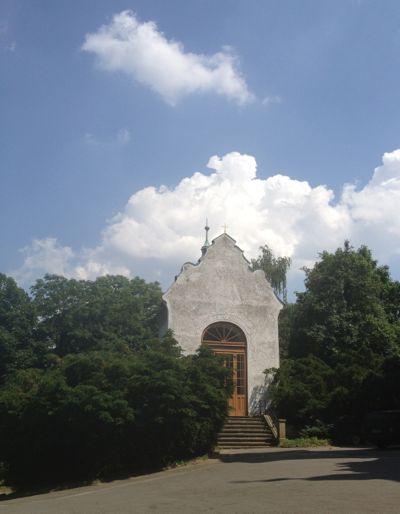
Today, Prague’s almost minuscule proportions hardly digest the international banquet of visitors. With its narrow streets, the Charles Bridge, the cobbled squares of the Old Town and the noble and once intelligentsia accommodating hoods bellow the castle squash the majority of the floding admirers. If you still want to capture her delicate soul as well as the soothing energy Prague gives away to anyone who allows her to, you need to adjust your schedule to the clock of tourism. Part from the groups on Segway tours, aways from the bachelor binges and the other eccentric inventions of our modern tourism industry. Although a ride in one of the historic cars with open roofs on a nice day may suit to romance seeking visitors. The Old Town Square ( Staroměstské náměstí) as well as the adjoining, with luxury gushing Pařížská street, are set as the departures for an imposing fleet of these old vehicles, that will take you around in a nostalgia evoking style. During the exploration lift your gaze up. The painted façades shield the most elaborate works of art just bellow their roofs.

Czech art scene
Browse around Kampa, the part of Lesser Town bellow the Prague Castle grouping artists in the past. Today, lacing the river banks of Vltava, there stands the modern Museum Kampa showcasing mainly contemporary Czech and Central European art. The exhibitions change constantly, but permanently the works of František Kupka and Otto Gutfreund are on display. The Museum was established by an art collector and benefactor Meda Mládek, who lived in exile until the 1989 Velvet revolution. She initiated a reconstruction of the historical premises of Sova’s Mills (Sovovy mlýny), former water mills, where the museum and the river-lining restaurant now stand. The surrounding park is like a small version of the Yoyogi Park in Tokyo. On pleasant days it serves as an alfresco rehearsal stage for the local theatre groups naturally ensuring entertainment for the passersby.
There are many museums in Prague, some worth checking out, but most are not as interesting, even kitschy (Torture Museum, Museum of Communism, Gold Museum…), but some of the interiors and galleries should be included in your cultural tour map. The Gallery U Betlemské Kaple (Betlémské nám. 8) showcases iconic Czech art from the past century like the comic drawings from Adolf Born as well as many contemporary pieces by living artists. Their intriguing inventory changes often and will interest collectors.
Interior designs in Grand Cafés of the 20th century
The world’s only cubist Grand Café Orient located on the first floor of the House of the Black Madonna (Ovocný Trh 19) was created by a renowned architect Josef Gočár. This building alongside its architecture showcases the unique czech contribution with furniture, pottery and glass to the cubist movement that was already established in paintings.


The name of Café Louvre (Národní třída 20) may sound French and it was built during the period of czech infatuation with everything French, yet this is one of the signature cafés of the First Republic Czechoslovakia era at the beginning of the 20th century. The grandiose rooms of the Café Imperial (Na Poříčí 15) boast exquisite ceramic mosaics on the walls, floral and animal carvings on the stoic pillars in the style of oriental and Moorish arts. Café Savoy is located across the river from the golden-roofed National Theatre (Vítězná 124/5), and shaded from the tourist crowds makes it a very popular elegant breakfast hangout for the locals. The lofty, over a century old ceiling adds a bourgeoise character, while the bread and pastries baked downstairs guarantee freshness. You can watch the pastry chefs work through a large glass window. Get a large soup with meat dumplings or Svíčková na smetaně often considered as the national czech dish (a confusing name literally meanining ‘candles on cream’, but it is a very popular slow-braised beef dish with a vegetable sauce served with the typical czech bread dumplings) for lunch there.

The new wave of luxurious lodging in Prague
In the historic Lesser Town, an elegantly restored 14th century monastery is now the residence of the Mandarin Oriental hotel (Nebovidská 459/1, Prague 1). The guests are welcomed by tranquil, delightful, luxurious and stylish interior combining history and modern comfort surrounded by the cobbled streets of the Lesser Town. The hotel’s spa is located in a former chapel adding spiritual energy to treatments that have won coveted awards for its therapists’ excellency and its splendid setting.
Another historic treasure is the Hotel Augustyne (Letenská 12/33, Prague 1). Augustyne is currently Prague’s most luxurious hotel, surpassing the outdated interior of the Four Seasons Hotel across the river. The Augustyne is situated at the gorgeously restored 13th century Augustian St Thomas’s Monastery. The six building complex has a lovely garden to sip the house beer. At the hotel today, made according to the same recipe as the monks made it now trusted to a local microbrewery, the golden hued Czech liquid jewel can be enjoyed at the its 1887 bar. Adorned by original frescoed ceilings reminding of the Strahov Monastery library, this is undoubtedly Prague’s most beautiful set for imbibing. The hotel’s 16 suites boast with views over either the nearby Prague Castle, the perfectly manicured garden and courtyards, the monastery chapel or the towering St Vitus cathedral. All the bedrooms were furnished with by-Czech-cubism-inspired decorative ceramics, sculptures and images. The Tower Suite has the most romantic view from all hotels in Prague.

Prague also booms with charming boutique hotels. The most active setting has the Hotel U Prince (Staroměstské náměstí 29, Prague 1) located right on the hiving Old Town Square. The hotel’s terrace offers unbeatable views of the wondrous Astronomic Clock and the castle complex. Its prohibition-style underground bar, the Black Legend, was recently voted as one of the Top 50 bars in the world. Other great cocktail bars include the Hemingway, Tretter’s and Buggsy’s, all in walking tastances between each other.
The highly cultured tourists appreciate having most of the sights at a short walking distance. The National Gallery, the Jewish quarter with a more than 700 years old striking Old-New Synagogue (Staronová synagoga) and its Jewish Cemetery crowning the Pařížská street, where the most luxurious global brands (Cartier, Louis Vuitton, Dior, Prada, …) laid their stately boutiques. Local fashion designers like Klára Nademlýnská (Dlouhá 3, Prague 1) are known mainly for their „pret-a-porter“ feminine collections, that are simply cut, modern and easy to wear. Their boutiques are located in the branching streets east from the Old Town Square.
The city’s fascination with precious metals and in particular gold reflects itself in the names of streets, restaurants and some hotels. The Golden Well Hotel (U Zlaté Studně 166/4), built on the same hill as the Prague Castle in a historic building surrounded by the castle’s rose gardens, has only 17 rooms and 2 suites making the guests feel at home. The breathtaking panoramic views from most of the rooms and the superb gastronomic restaurant Golden Well Terrace make for the most romantic dining experience in Prague.
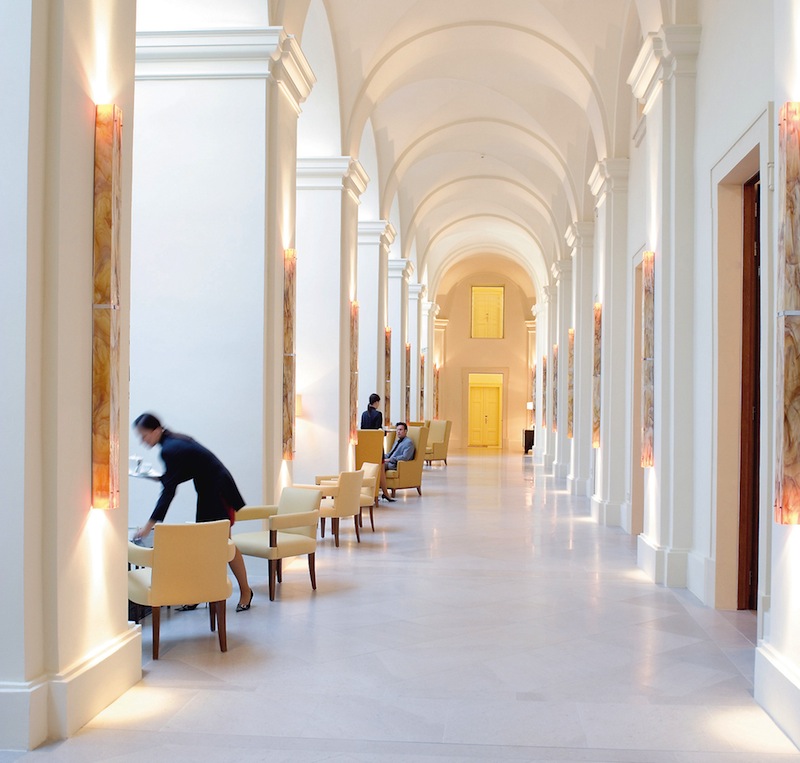

Buying quality and tradition
Shoppers eyes will be flared up while purchasing the globally renown Bohemia Crystal at the lavishly painted, gilded, magnificent old boutique of Moser (Na Příkopě 12, Prague 1; open daily except 25.12.). Ludwig Moser, made his company’s name chime loud in the glass manufacturing world. He opened his own shop and the engraver´s workshop in the centre of Western spa town Karlovy Vary in 1893 and quickly became the most prestigious producer of crystal in the former Austrian-Hungarian monarchy. Supplying the glass to royalty started with the emperor Franz Joseph I, later extended east to the Persian shah Musaffereddine and west king Edward VII of England. The modern royals as well as influential statesmen today still long for its precise clarity. Handmade production of an ecologically friendly lead-free crystal of a unique color spectrum and co-operating with the top artists guarantees the top-notch quality and prestige. A five minute stroll from the store is Museum Moser (open daily on the Old Town Square) that showcases important masterpieces created during the existence of the Moser house.

Traditional puppets reserved not just for children can be bought at Marionety right next to Charles Bridge (U Lužického Semináře 5). At this charming little store the hand-carved wooden puppets made according to the old local craft hang from the ceiling waiting for someone to play with them or decorate home walls.
For contemporary Czech design a must-go is Futurista Universum (Betlémské náměstí; Prague 1), a large and clean-cut space dedicated to the works of the most significant modern Czech designers. continually updated selection of the best design, jewelry and architecture.
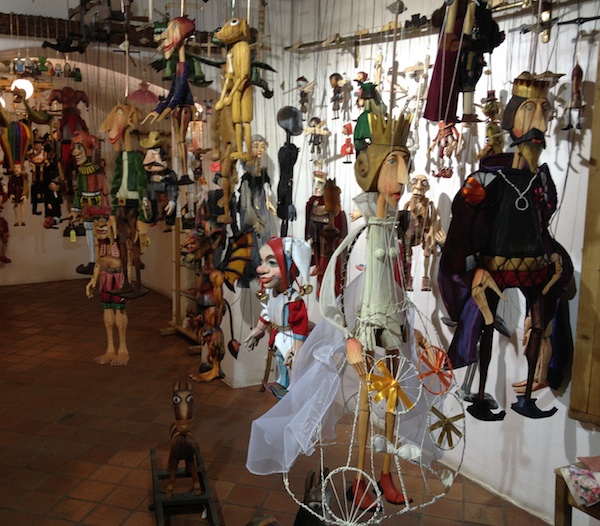

Musical ears of Prague
Today, a quarter of a century since the Velvet Revolution, the city stubbornly owns its authenticity while also flourishes with edgy art galleries, stages world’s best classical music, casual jazz concerts, pampers with authentic European Grand Cafés in Art Nouveau, Art Deco or Cubist styles as well as intriguing gastronomic dining locations. Rudolfinum and the grandiose Municipal House, both homes for the internationally praised Czech Philharmonic Orchestra, are best for classical music, Jazz Dock, Reduta and U Malého Glena for jazz, soul and other genres that emerged in the past century America. Seeing the Rusalka Opera at the old gilded building of the National Theatre makes you believe in fairy tales and bewilders even the adults.
Smetana’s jolly notes of “My Country” and “Vltava” are one of the most emotional classical compositions ever written, so if you cannot decide what to book, look for this Czech composer’s epic oeuvre. At the same time intense and mellow, its harmonious composition overwhelms you with sensations. The violins, like chippering birds in spring announce the joy from natural awakening, penetrating your soul with a present, conscious and energizing bliss.
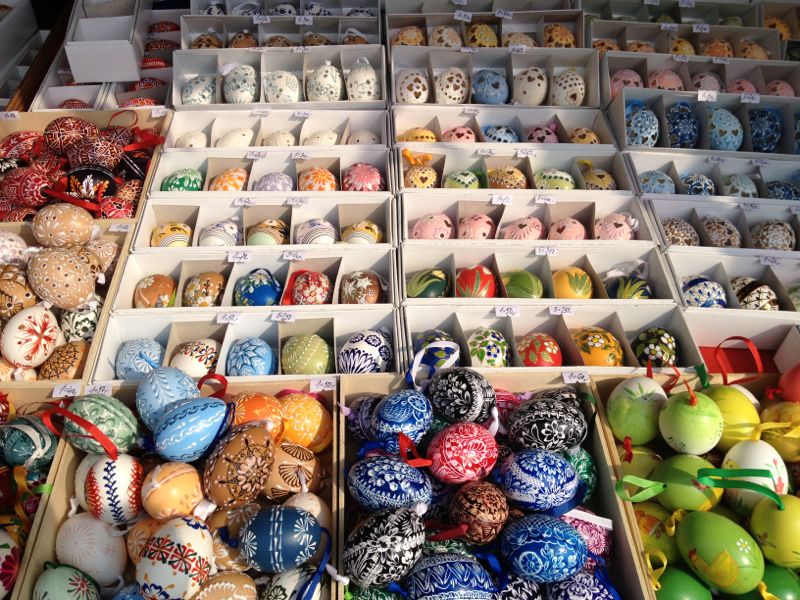
The hourly spectacle of the 15th century Astronomical Clock, crossing the robust stone Charles Bridge, and marveling at the puzzle of the fairytale Prague Castle buildings that create the “world’s largest coherent castle complex” are just one reason for visiting. The best month for the trip is May, when the annual Prague Spring series of concerts take on the town’s stages, the Prague’s Gourmet festival on the Castle kicks off, and the flowering trees on the Petřín hill gardens tantalize your nose. Earlier in the spring you can admire the Czech Easter traditions including the colorful hand painted easter eggs. Fall is also pleasant, as the number of tourists declines considerably or the chilly December, when the city sparks with Christmas lights and authentic outdoor crafts markets hosted on all the main squares. It can get very cold, so wearing a thick winter coat, ears-covering hat and sipping on spiced mulled wine can make the tour around the city more enjoyable for warm climate dwellers.
The “City of Hundred Spires”, the “Golden City” or the “Heart of Europe”, whatever nickname was adopted for by the centuries beautified Prague, the core of the town is an architectonic masterpiece, while its liberal citizens welcome anyone that can inspire them to create something new. Prague hums with activity, but strangely her architecture creates a calming feel as if the town’s own body relished in stillness. Do not miss the opportunity to penetrate deeper under her perfect skin and try to find her soul!

